Hosted by
Housing
Books on the market dynamics, governance, organisational strategies, quality of housing.
All Books

This sector portrait of the design engineering sciences describes the common denominator of the various design disciplines in the Netherlands. In a future sector plan, the above investment areas will be further explored and purposefully developed.
The implementation of technological innovations aligned to societal issues encompasses a design challenge. This increasingly demands science-based design methodologies. The broad Dutch design landscape can fulfil the role of connector...

The research of TU Delft’s Faculty of Architecture and the Built Environment (Faculteit Bouwkunde) covers the full spectrum of design, engineering, planning, and management of the built environment. Its research portfolio comprises the research that is conducted by four departments:
- Architecture
- Architectural Engineering + Technology (AE+T)
- Management in the Built Environment (MBE)
- Urbanism
The faculty’s research focusses...

This research is aimed at better understanding how occupants use energy in their homes from a comfort-driven perspective, in order to propose customized environmental characteristics that could improve the occupants’ comfort while reducing energy consumption. To propose such bespoke environmental features and feedback, occupant archetypes were produced based on the intentions and motivations behind comfort behaviours. Building upon the aim of this thesis, the following main research...

The subject of this dissertation concerns the investment decisions made by housing associations in urban renewal neighbourhoods in cooperation with other stakeholders.
Project background and problem statement
A number of radical changes are taking place in the development and renewal of urban neighbourhoods in the Netherlands. First of all, the focus has shifted from large-scale new building on expansion locations to the renewal of existing urban areas....

The UK’s largest new town, Milton Keynes, is the product of a transatlantic planning culture and a plan for a relatively low-density motorised city generously endowed with roads, parklands, and the infrastructure of cabling for communications technology. At its heart was the charismatic and infl uential Richard (Lord) Llewelyn-Davies. A Labour peer with various personal and professional interests in the USA, he drew upon the writings of American academics Melvin Webber and Herbert J. Gans,...

Europe Rehoused was one of the most influential housing texts of the 1930s, and is still widely cited. Written by the housing consultant Elizabeth Denby (1894—1965) it offered a survey of the nearly two decades of social housing built across Europe since the end of World War I, with the aim of informing British policy makers; as a reviewer declared ‘it has a decidedly propagandist flavour.’ Denby was a leading figure in housing debates in the 1930s. Adopting a line in sharp critique of...

Tropical Architecture, although now a highly contested and debated term, is the name given to European modern architecture that has been modified to suit the climatic and sometimes cultural context of hot countries. These hot countries were labelled ‘the tropics’ and were often European colonies, or countries that had recently won their independence. Fry & Drew’s book, written on the threshold of the end of the British Empire, was one of the first publications to offer practical advice...
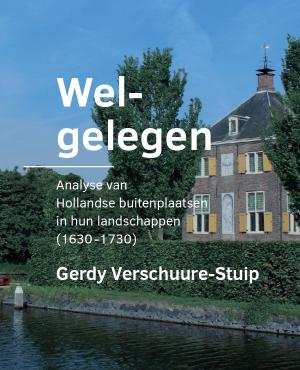
Aim and outline of the research
The aim of this dissertation is to identify and classify the various Holland country houses landscapes based on the most important factors and motives involved in building of the large amount country-houses between 1630 and 1730. The method combines research to tangible and intangible aspects of the spatial designs of country houses and their surroundings. The main research question is: what physical, societal and mental factors...
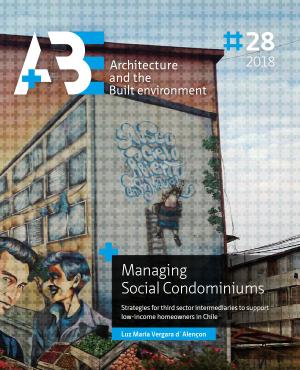
Low-income homeowners face financial and social constraints that are serious challenges to providing adequate maintenance. The fact of owning a property should lead to material progress, security and income opportunities to cope with poverty, however these benefits depend on the capacity of homeowners to keep the property in good condition, and also on the opportunities and support generated by the context and the institutions involved. If these conditions are not guaranteed, low income...
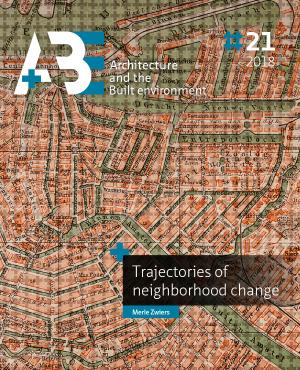
Neighborhoods represent a scale at which inequalities are reflected in the unequal spatial distribution of ethnic and income groups across urban space. In many cities, the rich reside in high-quality neighborhoods in favorable locations while the poor are concentrated in disadvantaged areas (Hulchanski, 2010; Van Eijk, 2010). However, neighborhoods are not static entities and spatial patterns of socioeconomic and ethnic inequality shift over time as a result of processes of neighborhood...

Residential buildings account for a significant amount of the national energy consumption of all OECD countries and consequently the EU and the Netherlands. Therefore, the national targets for CO2 reduction should include provisions for a more energy efficient building stock for all EU member states.
National and European level policies the past decades have improved the quality of the building stock by setting stricter standards on the external envelope of newly made buildings,...
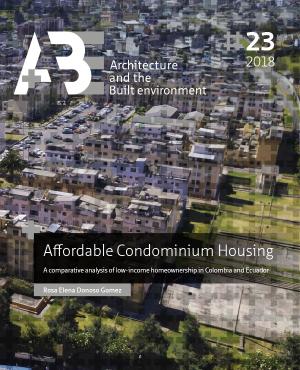
Both the general public and policy makers see home ownership as a major life goal. Owning a home is a form of capital that creates a social safety net (Elsinga, 2005; Moser, 2009). Home ownership can also help boost self-esteem and contribute to housing satisfaction (Elsinga & Hoekstra, 2005; Marcuse, 1972). In South America, owning your own home is a way to ensure basic economic security and is a dream shared by everyone. For this reason, large-scale investments are needed in...
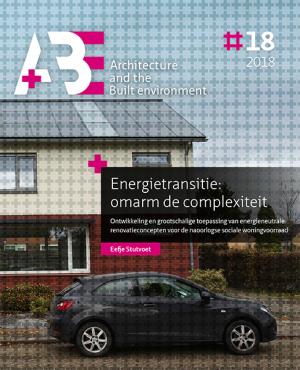
This book presents the outcome of research on conditions for development and large scale application of energy neutral renovation concepts, which can contribute to the transition towards an energy neutral post-war social housing stock. Two projects are studied of the innovation and transition program ‘Energy Leap’ (Energiesprong); ‘Slim & Snel’ and ‘De Stroomversnelling’. The aim of both projects was to stimulate the development and large scale application of energy...
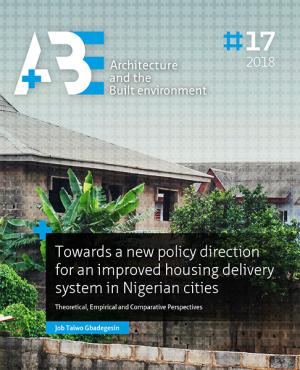
In Nigeria, housing units are not adequate for the entire population, especially in cities (Anosike et al. 2011, Makinde 2014). For instance, the deficit grows at an alarming rate, from about 8 million in 1991 to over 16 million in 2000s (Aribigbola, 2000; Aribigbola and Ayeniyo 2012). The challenges of housing provision are not only quantitative but also qualitative and have to be dealt with in a dual institutional perspective: the formal and the informal sector (Makinde, 2014;...
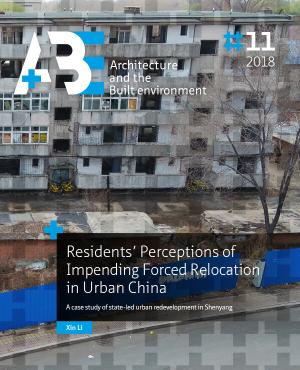
Since 1978, urban redevelopment in China has resulted in large-scale neighbourhood demolition and forced residential relocation, which can severely disrupt established people-place interactions in the demolished neighbourhoods. Urban redevelopment in China has also been criticized by the public and scholars, because the position of the residents in decision-making processes of urban redevelopment is often marginalized. Conflicts have arisen between the residents, local governments and...
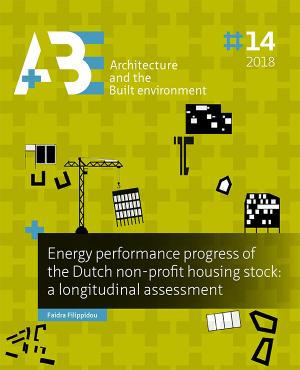
Worldwide, buildings consume a large part of the total energy delivered. In the context of all the end-use sectors, buildings represent the largest sector with 39% of the total final energy consumption, followed by transport in the EU (European Union )1. A considerable percentage of this energy consumption is attributed to the residential sector. The building sector plays a major role in order to meet the energy saving targets set in the EU and in the...
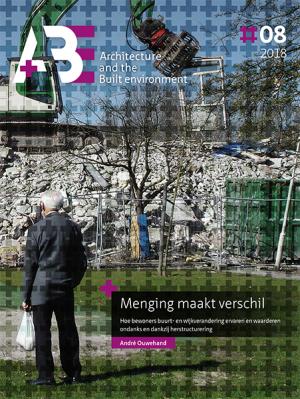
For decades, the new housing estates that were built in the Netherlands after World War II had a solid reputation as neighbourhoods of progress (Reijndorp & Van der Ven 1994). Young households were queuing up for a dwelling in these modernist urban areas, which were known for an abundance of light, air and space, though only higher-skilled and white-collar workers could afford to live there. But with growing prosperity and rising expectations for housing...
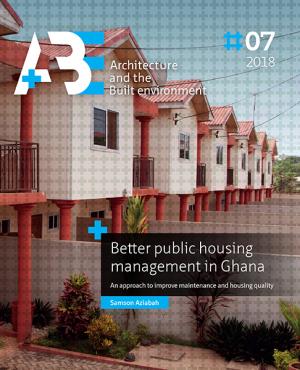
Adequate housing and shelter have been recognised by the United Nations (UN) as a human right. All signatory countries to the Universal Declaration on Human Rights are enjoined to take steps to provide decent and adequate housing to their people. To this end, the UN has led and advocated various policy initiatives aimed at addressing housing challenges globally. In the 1950s, it advocated direct housing production by member states. Since the 1970s, it has advocated the...
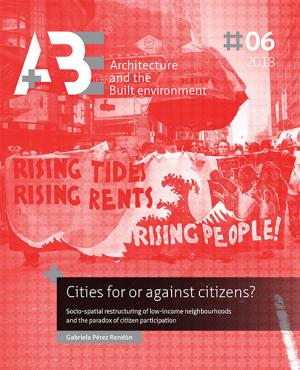
Urban renewal has evolved into an ambitious and sophisticated urban strategy, recognised as urban revitalisation in America and urban regeneration in Western Europe. This new urban strategy, which tends to be area-based and state-sponsored, claims for the most part to coordinate a wide range of resources, partners and public agencies to bring about social, economic and spatial improvements in underdeveloped and impoverished city areas while improving the livelihoods of the local residents....
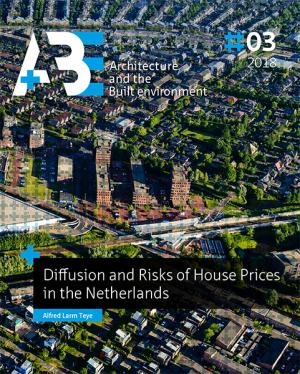
The rate of home-ownership has increased significantly in many countries over the past decades. One motivating factor for this increase has been the creation of wealth through the accumulation of housing equity, which also forms the basic tenet of the asset-based welfare system.
In generating the home equity, house price developments play an important role. Generally, house prices show an increasing trend over long time period, however, there are short-term negative appreciations...

Paper is a fascinating material that we encounter every day in different variants: tissues, paper towels, packaging material, wall paper or even fillers of doors. Despite radical changes in production technology, the material, which has been known to mankind for almost two thousand years, still has a natural composition, being made up of fibres of plant origin (particularly wood fibres). Thanks to its unique properties, relatively high compression strength and bending stiffness, low...

As a result of the large amounts of CO2 emissions the built environment produces, it contributes immensely to climate change. Within the strategies developed to reduce anthropogenic CO2 emissions, getting buildings to an energy-neutral level is one of the main priorities. The blueprint for this altered energy-efficient building now seems to be ready: the heavily insulated outer shells of buildings have decreased the demand for energy and the necessary coolness and warmth are induced using...
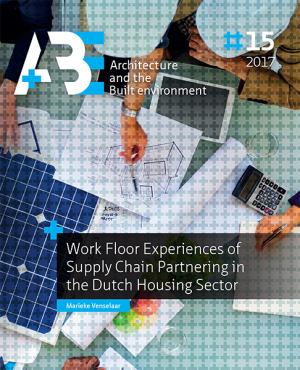
The construction industry is known for its waste of money and materials, low innovative capacities, and low productivity (Cox and Thompson, 1997; Vrijhoef, 2011). One reason is that the relationships between client and contractors is often perceived as a problematic one (Tazelaar en Snijder, 2010; Vrijhoef, 2011). Since decades, attention has been paid to supply chain partnering (SCP) in the construction industry, as a promising strategy to decrease waste of time and money and increase...
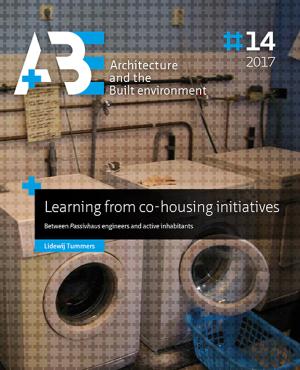
Following the UN world summits on Climate Change (Paris 2015) and Habitat (Quito 2016), most European cities assume an active role to implement internationally agreed goals related to climate change, translated in the so-called New Urban Agenda. At the same time, the urban housing market is increasingly inaccessible for low- and middle-income households. To overcome problems such as failing housing supply and high energy-bills, groups of residents take initiatives to create and manage...

Homes are renovated a number of times during their lifespan. Although we can regard each of these renovations as new, it is more prudent to implement a future-proof solution to renovation. Current renovation practice focuses on renovating to meet current demand. Many of the renovations are still extremely labour intensive and occur on site. This results in solutions to ensure that the house once again meets the required standards in the short term. These standards will continue to change...

In the past decades, diversity has become a popular catchphrase in theoretical, policy and public discourses in Canadian cities. Toronto is Canada’s most diverse city, wherein a long-standing immigration history coupled by the introduction of the Canadian Multiculturalism policy in the 1970s have rendered diversity a prominent value for the city’s inhabitants (Ahmadi and Tasan-Kok, 2014). Celebration of diversity has become a popular theme in Toronto’s policy and image making, such that...
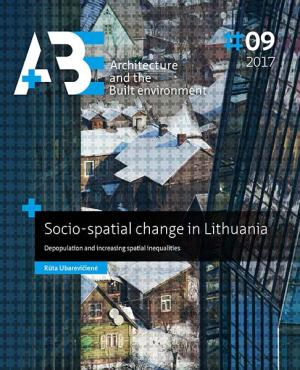
The fall of the Berlin Wall in 1989 signalled a major change for Central and Eastern European (CEE) countries. Despite the significant benefits gained with the ‘return to Europe’, CEE countries have also been faced with large challenges (Gentile, Tammaru, & van Kempen, 2012; Kornai, 2006; Koví¡cs, 1999; Shleifer & Treisman, 2014). They had to transform their political and economic systems and find new ways to establish themselves in the context of increasing globalization,...
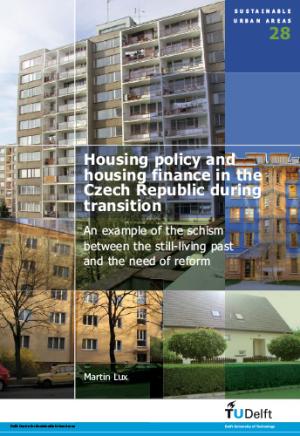
This book contains the description and evaluation of a profound housing system reform constituting part of the transition from a centrally planned to a market economy in the Czech Republic. It addresses two goals: to evaluate housing subsidies (reforms) by application of improved methods of welfare economics and, secondly, to list the main factors explaining the particular outcomes of selected reforms. The author applied methods of welfare economics for an evaluation of housing subsidies...
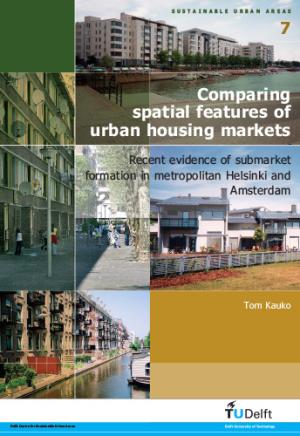
Various location specific attributes contribute to the spatial dynamics of housing markets. This effect may partly be of a qualitative and discontinuous nature, which causes market segmentation into submarkets. The question however is, whether the most relevant partitioning criteria is directly related to the transaction price of to other, socioeconomic, demographic and physical features of the location. Two neural network techniques are used for analysing statistical house price data from...
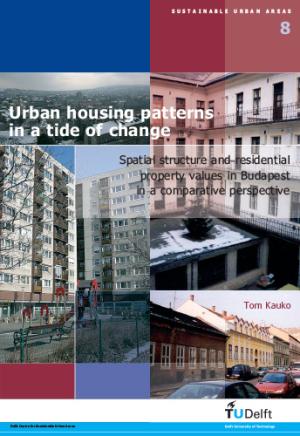
The development of the housing markets in different European metropolitan areas is of high interest for the urban development and the real estate markets, which are moving towards globalisation. The Budapest housing market is an ideal candidate for scrutiny from an institutional and evolutionary perspective due to its fragmented nature: different house types, age categories, price levels and micro-locations are found side by side. This is a case ‘in between’ Eastern and Western settings,...
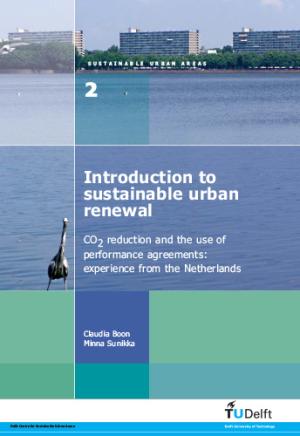
As in other European countries, the renewal of post-war housing estates is a major policy issue in the Netherlands. The aim is to upgrade neighbourhoods by means of demolition, renovation of social rented housing and construction of new owner-occupied dwellings. The existing housing stock is a key factor in attaining the greenhouse gas reduction targets in the Kyoto Protocol. This process of renewal will pursue high targets and ambitions as it gets underway in the coming years. It will...
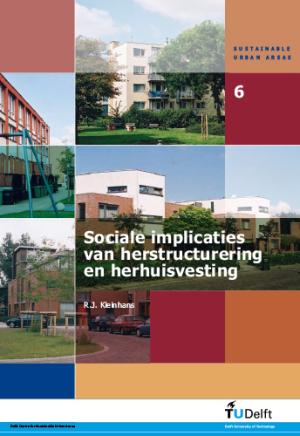
Herstructurering heeft grote gevolgen voor het aanzien en het functioneren van naoorlogse woonwijken. Sloop, renovatie en nieuwbouw van woningen leiden veelal tot omvangrijke verhuisbewegingen uit, binnen en naar deze wijken. In dit boek nemen we de sociale consequenties van deze verhuisbewegingen en de veranderende bevolkingssamenstelling onder de loep. Wat betekent de verhuizing voor de woonsituatie en de wooncarrií¨re van de vertrekkers, de doorstromers en de nieuwkomers? En hoe kijken...
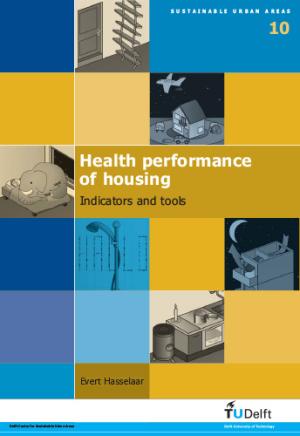
Human health is a condition influenced by many aspects: genetic predisposition, food and water, lifestyle, age and the physical and social environment. Outdoor hazards penetrate the house and add to the indoor hazards. The physical housing conditions and also occupant behaviour create health hazards. In maintenance policy and renovation projects, the opportunities to reduce health risks and adapt houses to the health needs of households are not used to their full potential. Health criteria...
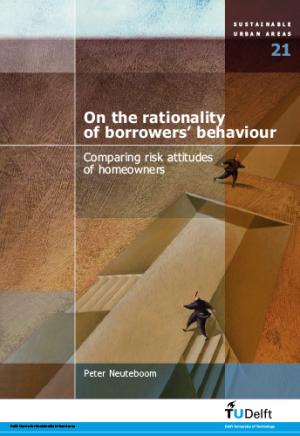
'On the Rationality of Borrowers’ Behaviour' was prompted by two observations: first, mortgage take-up amongst homeowners was fairly divergent across Europe, and second, the fact that this was seen by academic researchers as well as policymakers and financial authorities as an indication of fundamental differences in the risk attitudes of homeowners. Although the time and depth of the cycles differed from one European country to another, mortgage markets have grown in size, expanded in...
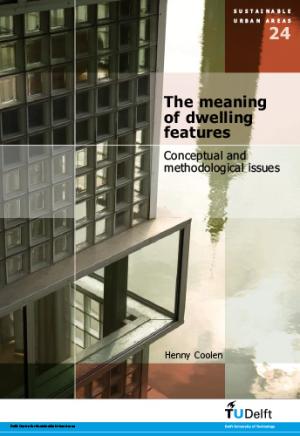
'The Meaning of Dwelling Features. Conceptual and Methodological Issues' relates the research areas of housing preferences and the meaning of a dwelling with each other and with aspects of the means-end approach as applied in marketing research. It results in a conceptual and methodological framework for studying the meaning of preferences for dwelling features. These features are viewed as functional for achieving the goals and values that people pursue. The meaning of dwelling features...
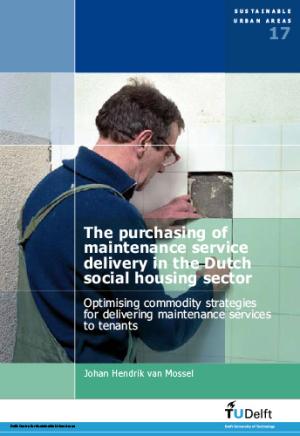
Dutch housing associations have a market share of about 33% of the entire Dutch housing stock. They spent around 2.8 billion Euros a year on the maintenance of dwellings, of which external suppliers account for approximately 89%. External service suppliers can as such be seen as an extension of the housing associations in fulfilling their public tasks and private objectives. Maintenance service delivery gives an opportunity for high quality interaction with tenants. At the moment...
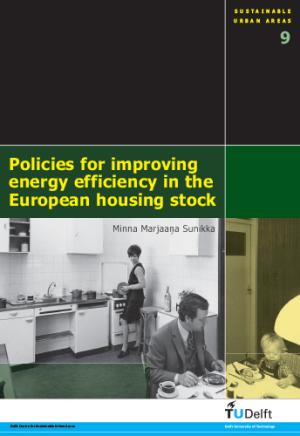
According to EC forecasts, if energy efficiency could be increased 1% annually until 2010, two-thirds of the potential energy saving in the EU could be achieved. This would comply with 40% of the EU’s Kyoto obligation to reduce greenhouse gas emissions by 8% on the 1990 level by 2010-12, by cutting 200 million tonnes of CO2 emissions per year. Improving energy efficiency in existing buildings is often considered to be one of the most cost-effective ways of cutting carbon emissions. Current...

The contributions in 'Performance Measurement in the Dutch Social Rented Sector' address the societal and practical needs of housing associations, in order to develop better instruments for performance measurement. The provision of useful instruments allows for more transparency and thus improved external control over housing associations. At the same time these instruments should benefit the internal control and planning processes of the housing associations. The identification of Key...
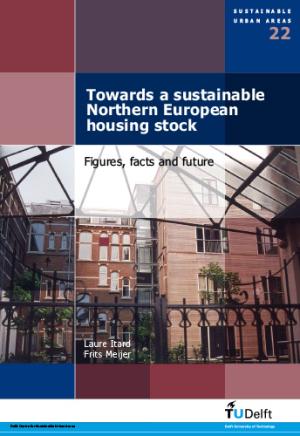
Never were energy use and security of energy supply as high on the international political agendas as they are now. There seems to be a consensus that energy savings and sustainable energy production must have a high priority. Because the energy use in the residential and non-residential sectors account for a large part of the total energy use, new programs are being developed in order to limit the consumption of energy in these sectors and a lot of attention is put into increasing the...
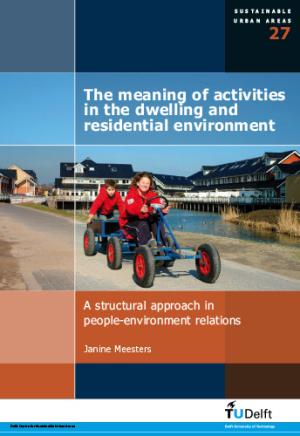
The dwelling is a central setting in people’s everyday life. People use their dwelling and residential environment for a large variety of activities and purposes. The Meaning of Activities in the Dwelling and Residential Environment systematically relates activities, settings and meanings to improve the insight into people-environment relations which is called a meaning structure approach. Over 600 people, living in either a city centre, suburban or rural type of residential environment...

Sustainable housing construction and management has, to date, been primarily based on an intuitive approach. Numerous measures have been formulated to promote sustainable construction and to reduce the environmental impacts of the built environment. However, little is yet known about the extent of the environmental benefits thereof. Moreover, methods and tools are mainly directed to new construction. This publication makes clear that short-term environmental benefits in sustainable housing...

In the context of the sustainability of housing, the assessment of interventions in the stock is of primary importance. So, one of the first requirements for a decision support tooi in this field is that it can compare renovation to demolition followed by new construction. In this thesis the model of the Eco-costs/Value Ratio is elaborated for housing in a way that it meets this requirement. The elaboration of this approach connects eco-cost estimating to the traditional economic cost...
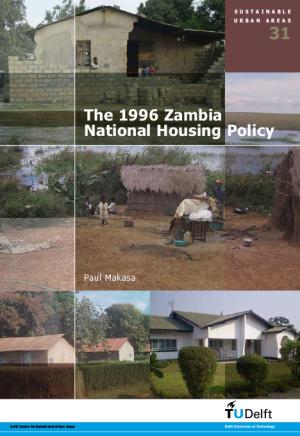
Devising a workable housing policy in a country with apparently insurmountable housing problems, presents a great challenge. With the help of an award from UN-HABITAT, Zambian authorities attempted to do just this, in a process which is an ideal candidate for scrutiny. This study analyzes the goals, means and instruments that were used to formulate the policy, as well as its planned implementation. It examines whether the policy could have achieved its goals had it been implemented, and...
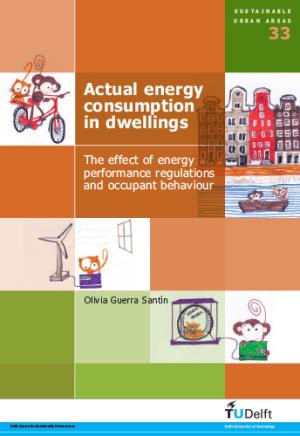
Residential buildings have continuously improved in energy efficiency, partly as a consequence of the introduction of energy regulations in many countries. Although better thermal properties and systems efficiency have lowered energy consumption for space heating in recent decades, substantial differences in energy consumption in similar dwellings are still being observed. These differences in consumption are thought to be caused by differences in occupancy patterns, by quality of...
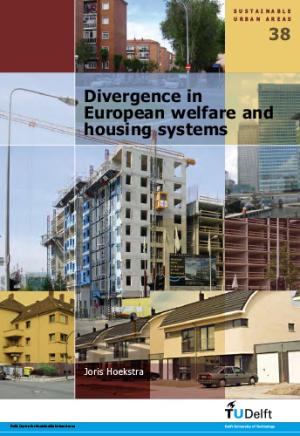
The book explores the relationship between the characteristics of the welfare state and the characteristics of the housing system (housing policies, housing outcomes and housing market developments) in different European countries. It consists of a theoretical framework, six published articles and a concluding chapter. All six articles use the welfare state regime theory and typology of Esping-Andersen and/or the housing system typology of Kemeny, or at least some aspects of these, as an...
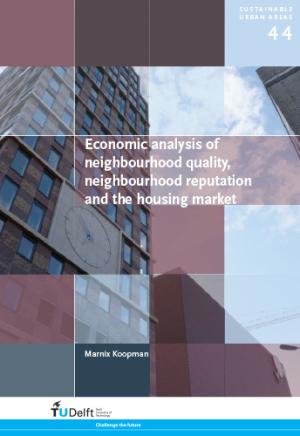
Residents know exactly what their neighbourhood is like. House-seekers, on the other hand, must find out for themselves about the intangible social quality of neighbourhoods. As a simple rule of thumb, neighbourhood reputation can offer them a assessment of neighbourhood quality. In this research, regression analyses are applied to test whether neighbourhood reputations are being used as a proxy measure for neighbourhood quality in residential mobility choices and establishing the price of...
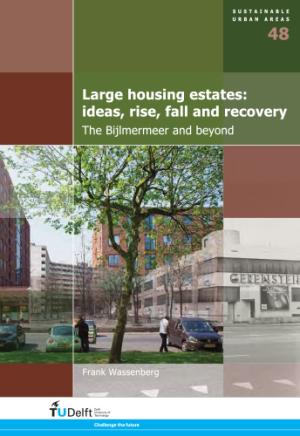
Large housing estates: for some people these three words symbolise all that is wrong in urban planning. Large is wrong, because many people prefer a living surrounding that reflects the human scale. Housing as a single function is wrong, because mixed areas are livelier. And estates are wrong, as these refer to top-down planned areas which the residents themselves have no say in.
Although many such estates function well, others have proved to be in serious problems. The question is...
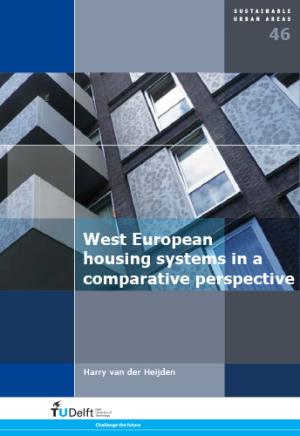
West European Housing Systems in a Comparative Perspective gives an overview of the results of almost 20 years of international comparative housing research, carried out by the author and his colleagues at OTB Research Institute for the Built Environment. The articles give evidence of the transition from descriptive analysis to theoretical exploration and the growing relevance of methodology during these years.
The results provide deeper insight into comparative research...
